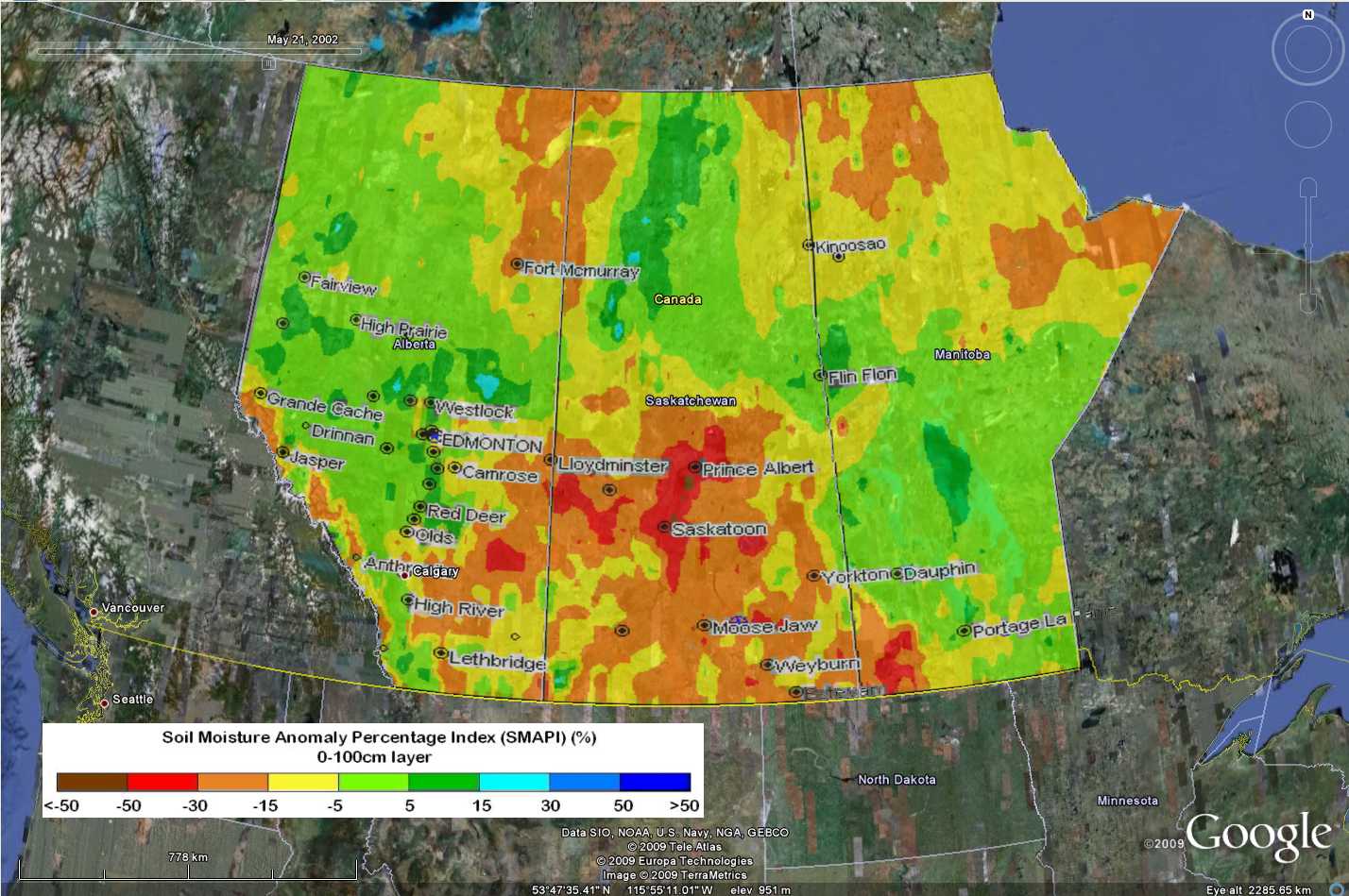|
 Download
file for Google Earth:smapi.kmz Download
file for Google Earth:smapi.kmz
|
Description:
Using
observed temperature and precipitation measurements soil moisture
is calculated using the Variable Infiltration
Capacity Model. This model accounts for non contributing areas
characteristic of prairie hydrology. The soil moisture has been
calculated for 1950 to present and this record reflects local
characteristics and mirrors the hydro-meteorological phenomena of the
prairies. The model output is available for 3 soil layers: 0-20cm
depth, 20-100cm depth and 0-100cm depth. It has been calculated on a
daily, monthly, seasonal and annual timescale historically. It is
available in
real time with a forecast period of up to 1 month.
The map is shown in units of SMAPI. SMAPI compares the calculated soil
moisture to the average soil moisture (1950-2005) and presents it as a
percentage. In other words, a value of -30% means that the calculated
soil moisture is 30% less than average. To provide context -50
refers to extreme drought, -50 to -30 to severe drought, -30 to -15 to
moderate drought, -15 to -5 to mild drought and -5 to 5 to near normal
conditions. The same naming convention can be applied to the positive
numbers though in terms of wetness.
|
|
Provide an
example of how you would use this
information?
For what time would this information be most valuable?
If available as a forecast, when would this
information be the most valuable?
What time scale would be most valuable?
What percentage of the time would this information
need to be correct to be useful?
What spatial scale would be most valuable?
Additional comments on this data product?
|